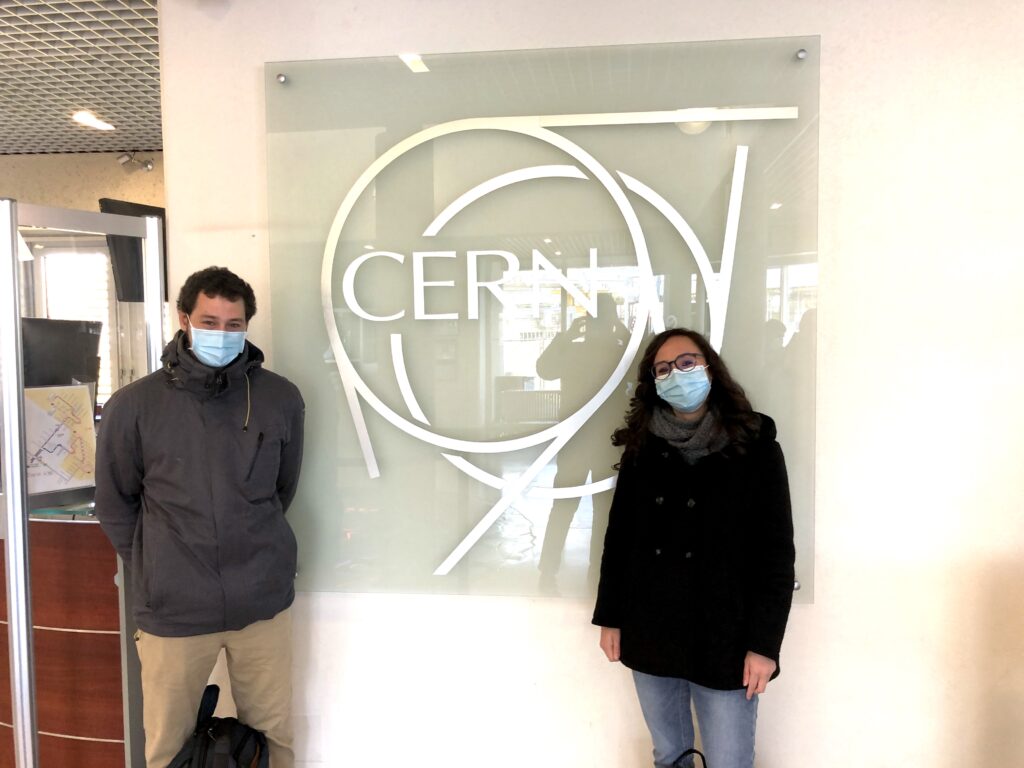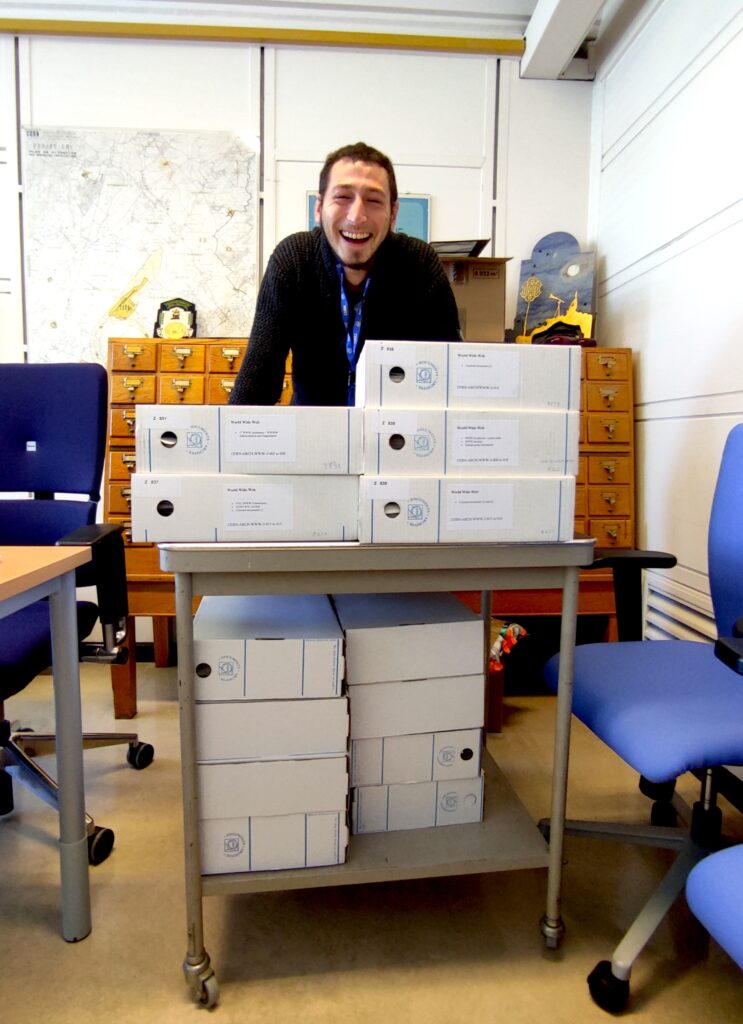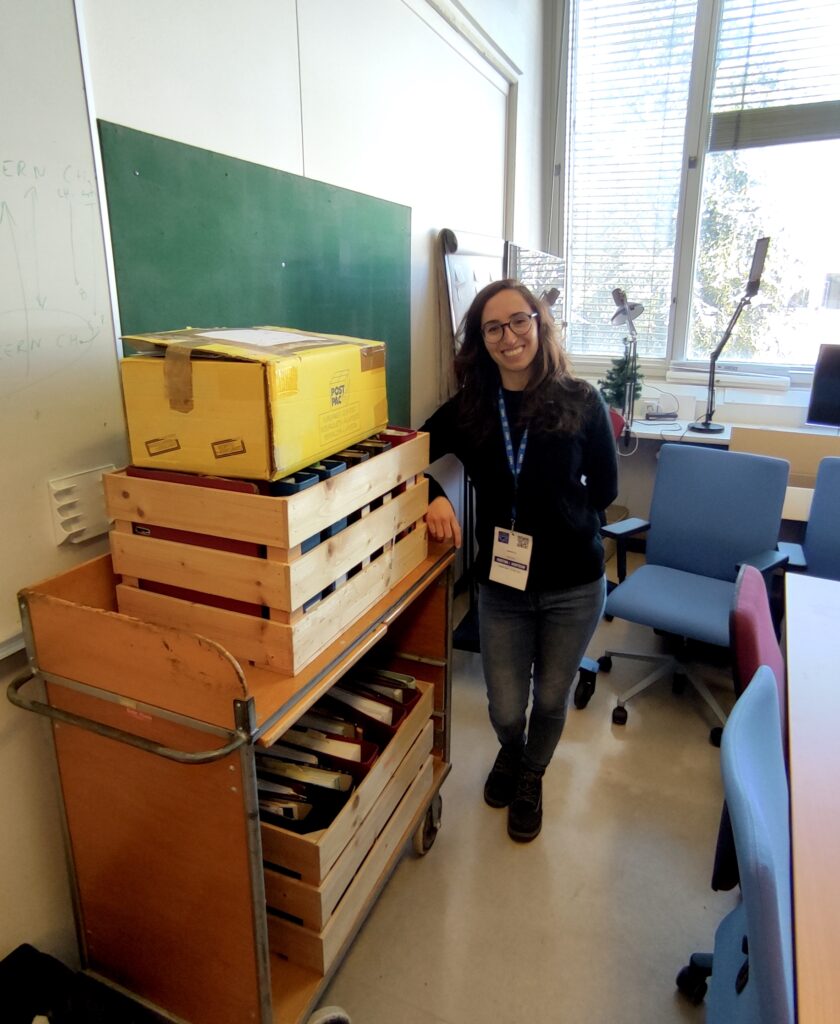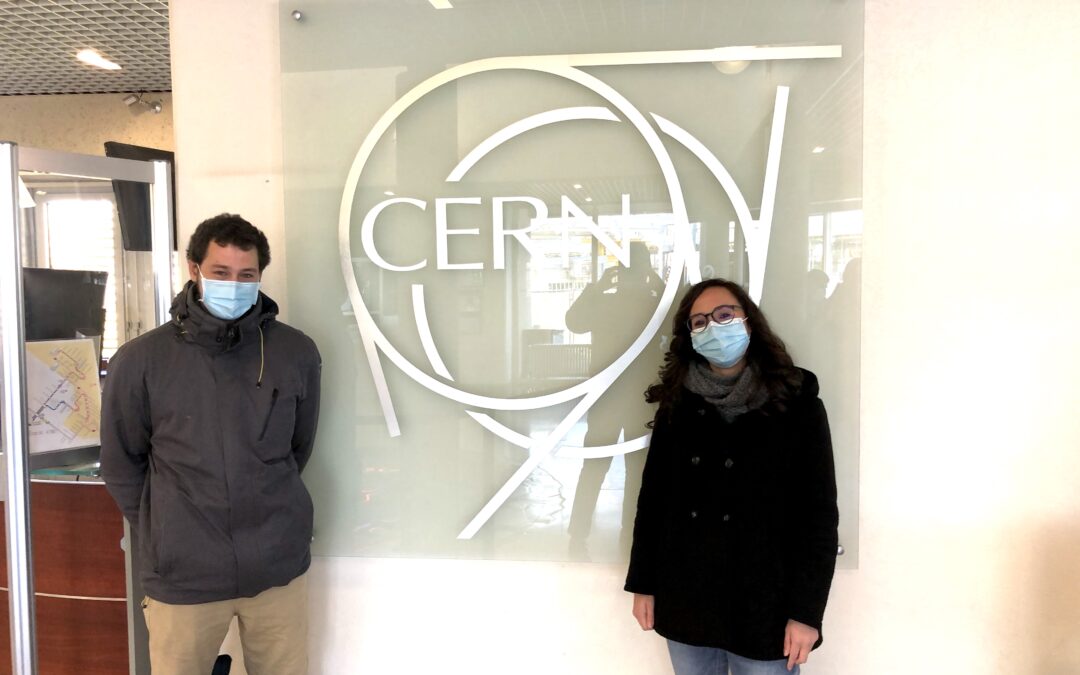Have you ever wondered what it is like to work at CERN? Yes, right at CERN, in that physics lab in Meyrin midway between Switzerland and France. A mystified place, scripted by Dan Brown for his book “Angels & Demons,” the spot where scientists are working on antimatter’s stability.
You may now be wondering why historical researchers who are rediscovering the history of the Web are asking this question.
You may not have known this, but the World Wide Web was born right within the walls of CERN, and it is in the basement of its buildings that the most important documents related to the creation of this technology are preserved. For this reason, to have a complete picture of the origins of the WWW it was essential to go to the most famous European physics laboratory in the world and look at its related sources.
The Journey and the People
So, bright and early on Monday, November 29 (2021), Martin and I (Deborah) took the Intercity from Lugano towards Basel. An obligatory stop in Olten, to change trains and finally catch the one that would take us to the big, cold, and snowy Geneva. Once we arrived in the city, it was only about a 20-minute streetcar ride away from what would be our place of work, restaurant, and home for ten days.

To welcome us, an electrifying Jens Vigen, CERN’s Archive Section Leader, and a sweet and bubbly Sandrine Reyes, the Assistant Archivist. Kind and very helpful, they warmly received us as if we were full members of CERN: they even gave us the office’s keys so we could work on Saturdays and Sundays (it’s strange to have to thank people who make you work on the weekend, but in our case, it was a must).
Enthusiastically, they provided us with most of the Web-related archives. And now the question arises: what did we do with all this material?
The Work
Scan, scan and scan some more. In the digitization days, or perhaps even better in the Covid days, converting an entire paper archive into a digital repository is essential. Not only to analyze the material with specific software but also to make sure of having continuous access to the archive (which is not an easy task with a pandemic). So our typical day was: wake up, have a good breakfast at the CERN cafeteria, and lock ourselves in the office scanning until late in the evening. All multiplied by ten days.

Of course, during this time, there was no shortage of laughter, as well as careful reflection with respect to what we were reading. Scanning after scanning, we felt like we were holding the history of the World Wide Web in our hands more and more. And that’s how the SNF project “The origins and spread of the World Wide Web. Rediscovering the early years of the Web inside and outside the CERN archives (1989-1995)” was coming to life (again).
James Gillies: The Interview Transcript
In addition to that, we had the privilege of getting to know James Gillies, the head of the CERN communication group, and the author of How the Web was born: The story of the World Wide Web, a book written in close collaboration with Robert Cailliau, one of the WWW’s founding fathers (with whom we had lunch, but that will be the subject of a future blog discussion).
Enthusiastic about the project, James met with Martin and me to provide us with the material he had collected during the book’s writing year. Needless to say, all of his archives were extremely interesting, especially the transcripts of the interviews that will serve as a starting point for the ones we will do in the coming years.

What’s next?
We now have a huge amount of business documents, proposals, reports, promotional materials, etc. in our hands. It will be up to our research team to figure out how to best exploit these sources (from a methodological standpoint).
Follow us on social media to stay updated on the next steps and follow our study on the history of the World Wide Web. Twitter: @WHistory1989
